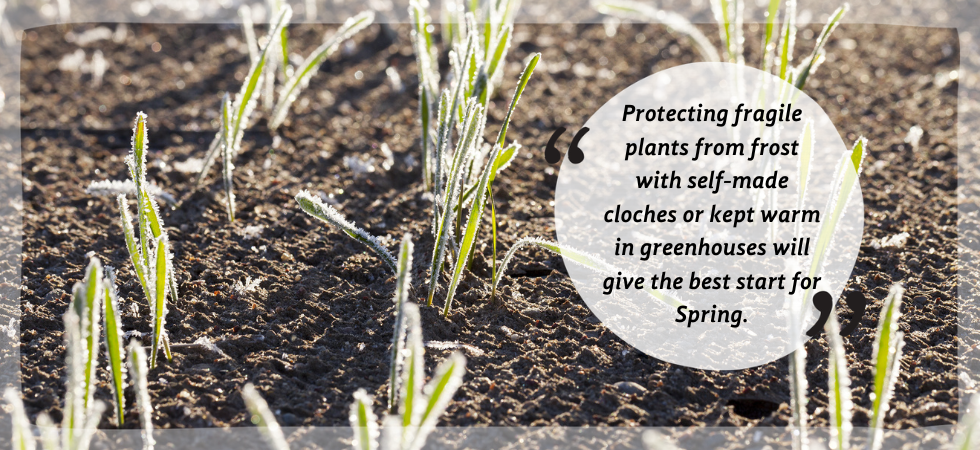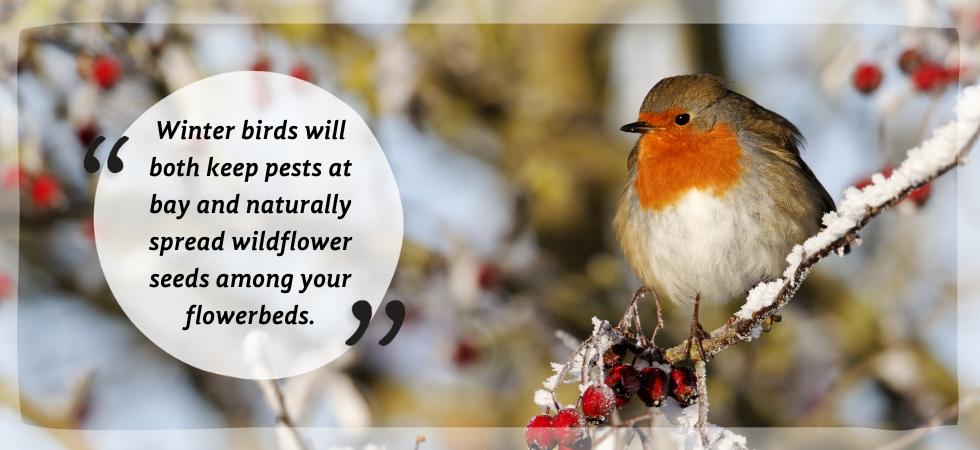The December Gardening Jobs Guide
In December, the year may be drawing to a close. But there’s still plenty of jobs in the garden, greenhouse or your sunny windowsill to keep you busy!
Crops to harvest in winter
Love ’em or hate ’em, Brussel sprouts can be harvested in December. Along with kale and cabbages. In fact, Brussel sprouts and kale taste all the better after a touch of frost!
Now’s also the time to dig up parsnips and carrots, perfect for a winter stew or roasted in a honey drizzle. And don’t forget lovely leeks to bulk out a comforting soup.
What to sow in December?
For the table
If you’ve a greenhouse or sunny window sill, try growing ‘cut and come again’ salad leaves or varieties like mustard or spinach. Plus herbs like chives, dill, mint and parsley. Late December is also a good time to start off onion seeds in pots indoors.
Have an unheated greenhouse? Lamb’s lettuce and winter lettuces like ‘Winter Gem’ are a delight.
For outdoors: if you’ve cloches to hand or it’s still pretty mild, you can sow hardy broad beans seeds directly into the soil. The same goes for garlic if your soil is well-drained.
For admiring next year
If you want early flowering plants next year, there are some varieties you can sow in December in a cool greenhouse. Try sweet peas, snapdragons (antirrhinums), geraniums, begonias, hardy cyclamens and laurentia plants.

Jack Frost in all his forms
Winter weather can be harsh on plants. But often it’s not the dramatic snowstorms or lashing winds that pack the most punch. The real killer is frost, which freezes the water within the plant cells so it expands and explodes.
Technically frost is water vapour that turns solid, creating that icy texture. There are many different types:
Hoarfrost or radiation frost: tiny ice crystals form when an object is colder than the surrounding air. Usually it will have a thick edge, such as frost on leaves. Pretty, but if your plant isn’t tough enough, it could spell disaster.
Air frost: this is when the air temperature at a height of at least 1.25 metres above ground drops below freezing, creating ice particles.
Ground frost: think shimmering white lawns. Ice forms if the ground temperature drops below the freezing point of water – 0 degrees celcius – and the surface cools quicker than the air.
Deterring frost with coir
Some gardeners have the luxury of bringing their most vulnerable plants inside a shed, greenhouse or conservatory. But if you’re short on such spaces, there are other ways to defend your plants:
• Cover plants at night with gardening fleece, hessian sacks or blankets
• Use cloches over plants such as glass bell jars or even plastic bottles cut in half
• Coir is an excellent insulating layer for your plants. Used as a mulch, it can protect anything delicate roots from ground frost.
Tip: Water your plants before adding the coir, as wet soil is a better insulator.
What coir is best for a mulch?
Our peat-free Coco Chip coir mulch works really well over everything from pots and containers to beds and borders. It also reduces weed growth by up to 90% and keeps slugs and snails away!
If you’re looking to protect plants in pots, how about our Coco Mulch Mat discs? They range in size from 15cm to 30cm.
Preparing your allotment for winter
On a sunny day in the summer, an allotment can be absolute heaven. Come December, the attraction isn’t as obvious. But if you have a good sorting out session now, you’ll be in a better position to enjoy yourself next year!
It’s not the most fun task, but it’s important to weed and clear beds now to prevent problems later. Also trim back borders and pathways.
Mulch parsnips, carrots and Jerusalem artichokes to try to prevent the soil from freezing.
Have a wormery? Move it into a shed or garage so the worms won’t freeze.
Protect cauliflowers, cabbages and brassicas with netting to stop birds such as pigeons eating them. Peg it tight so they can’t get caught up.
Keep popping back to turn over your compost heap.
Repair anything that looks a bit wobbly or rotten such as fences, raised beds or sheds.
Add a bird nesting box if you can, to encourage the ultimate pest controllers like robins!

Plan ahead for next season
As most plants have died back by December, you’ll be able to see the ‘bare bones’ of your patch. Do you need more architectural or evergreen plants for structure?
Also this month is a good time to take stock of your gardening year. Scroll through your photos and think about what worked well. And what didn’t. Then add this list you your phone. It will stop you throwing good money after bad at the garden centre next year. And save you the heartache of watching a plant fail to thrive.
Given repeat planting builds cohesion and rhythm in a garden, planting varieties of the same species is a good way to go.
Ask Santa for some gardening gifts
A decent pair of gardening gloves can make all the difference in keeping your hands warm through colder spells while protecting you from sharp edges.
If you just need to slip on something waterproof, how about one quarter-height mini wellies?
Shiny new secateurs are a joy to use, and clean cuts help protect plants against infection
A gardening apron is always useful, especially those ones with pockets
Fed up of cold feet in the potting shed? We’ve lots of colourful, sustainable coco coir mats to warm you up!
Need more inspiration? The National Trust have a great selection of garden-themed gifts.
Tips from the ‘Green Gardeners Guild’ online advice library
On the lookout for more tips and hints? Our blogs are packed with advice:
• Winter gardening: a guide
• How to keep plants warm in winter
• What should I grow in my greenhouse?
We’re making a list, we’re checking it twice…
If you use sustainable, peat-free compost then you’re obviously on the nice list. And whether it’s holly, ivy or something more exotic, we’d love to see how your winter plants are thriving. Tag us at @cocoandcoir on Instagram. We’ll credit you for any images we use and you’ll even get £10-worth of loyalty points for any of your stories we use!










